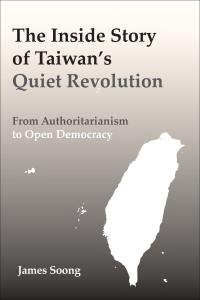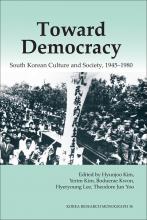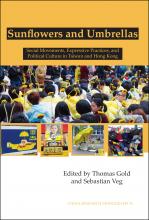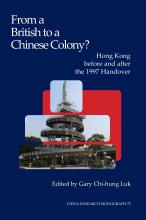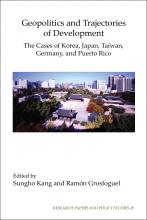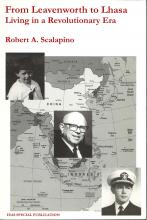The Inside Story of Taiwan's Quiet Revolution
The Inside Story of Taiwan's Quiet Revolution
James Soong
By James Soong, a key party and government official, this memoir of the years 1988 to 1993 details Taiwan's successful transition from authoritarianism to democracy. This period saw a nonviolent process commonly referred to as Taiwan's quiet revolution that serves as a case study for political scientists.
As a nonprofit academic press, we need your support to publish our books. Your gift can help us make more of our titles available as e-books. DONATE NOW
Title information
James Soong, a key party and government official, presents his remembrances, as well as many documents and photographs, in this record of the years 1988 to 1993. Chronicling Taiwan's successful transition from authoritarianism is open democracy, this book on the quiet revolution is a unique English-language source from an insider's perspective.
James Soong
Dr. James Soong has served as Secretary to the Premier (Chiang Ching-kuo), Secretary to the President, Director-General of the Government Information Office, and Secretary-General of the ruling party at the time, the KMT. Dr. Soong was also the only directly elected Governor of Taiwan, winning more than 56 percent of the total votes and serving from 1994 to 1998. Since founding the People First Party in 2000, he has been the voice of the middle ground and the much-needed third force in Taiwanese politics.
1974 PhD Political Science, Georgetown University, Washington, DC; 1971 MSLS, Catholic University of America, Washington, DC; 1967 MA Political Science, University of California, Berkeley; 1964 LLB Diplomacy, National Cheng-chi University, Taipei
The Inside Story of Taiwan's Quiet Revolution
Acknowledgments vii
Preface ix
Note to the Reader: The Principles and Conditions that Made
Taiwan’s Democratization Possible xvii
1. The Driving Force behind Chiang Ching-kuo’s Decision to
Democratize Taiwan 1
2. A Goal Kicked in: Lee Teng-hui Becomes Acting Party Chair 73
3. The 13th National Congress of the Kuomintang: A Shift in the Lees’ Relations 139
4. Becoming Secretary-General of the Kuomintang 171
5. The 1989 Year-End Elections and the Beginning of My Delicate Relationship with John Kuan 189
6. A Second Goal Kicked In: The February Political Disputes, from Beginning to End 209
7. The National Affairs Conference 257
8. Hau Pei-tsun Forms a Cabinet 305
9. Factional Fighting within the Kuomintang 359
10. The DPP and the April 17 Protest 375
11. Revision of Article 100 of the Criminal Code and the Taiwan Independence Provision 391
12. The DPP Joins the National Unification Council 425
13. The “One Institution, Two Phases” Approach to Constitutional Reform 449
14. The 2nd Legislative Yuan Is Voted in and the Provincial Government Is Frozen Out 505
15. Party Diplomacy 577
16. In Conclusion: Political Integration through Centripetal or Centrifugal Force 663
Bibliography 687

